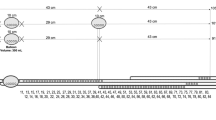Abstract
Purpose: Apart from the urethral sphincters, the electric activity of the urethra has not been fully addressed in the literature. We investigated the hypothesis that also the non-sphincteric part of the urethra possesses electric activity which may have clinical significance.Materials and methods: Urethral electric activity was studied in 24 healthy volunteers (mean age 40.6 ±: 13.6 years, 14 women). Two electrodes in women and three in men were applied to the urethral mucosa distal to the striated urethral sphincter. A manometric catheter was placed into the penile urethra in men and distal to the striated sphincter in women.Results: Monophasic negatively deflected slow waves were recorded. Their frequency, amplitude and conduction velocity were identical in the electrodes of the individual subject and were reproducible. The slow waves were followed or superimposed by fast activity spikes or action potentials which occurred randomly and were associated with urethral pressure rise. The pattern of electric activity was stable in the same subject on all test sessions.Conclusions: A normal electrourethrogram could be identified. It consisted of slow waves and action potentials. The waves had a regular rhythm. The action potentials appear to have a motor activity and are suggested to clear the urethra of the residual urine and secretions that may exist in the urethra after micturition. The clinical significance and diagnostic role of the electrourethrogram need to be further investigated.
Similar content being viewed by others
References
Junqueira LC, Carneiro J, Long JA. Urinary system. In: Junqueira LC, Carneiro J, Long JA, eds. Basic Histology, 5th edn. Los Altos: Lange Medical Publications, 1986: 413–434.
Elbadawi A. Anatomy and innervation of the vesicourethral muscular unit of micturition. In: Krane RJ, Siroky MB, eds. Clinical Neurourology, 2nd edn. Philadelphia: Little, Brown & Company, 1991: 5–23.
Awad SA, Downie JW. Relative contributions of smooth and striated muscles to the canine urethral pressure profile. Br J Urol 1976; 48: 347–351.
Brading AF. The physiology of the mammalian urinary outflow tract. Exp Physiol 1999; 84: 215–221.
Shafik A. Straining-urethral reflex. Description of a reflex and its clinical significance: preliminary report. Acta Anat 1991; 140: 104–107.
Kongrad A, Sololongo JR Jr. Bladder neck dyssynergia in spinal cord injury. Am J Phys Med Rehabil 1996; 75: 204–207.
Rudy DC, Awad SA, Downie JW. External sphincter dyssynergia: an abnormal continence reflex. J Urol 1988; 140: 105–109.
Kuru M. Nervous control of micturition. Physiol Rev 1965; 45: 425–432.
Shafik A. Study of the electromechanical activity of the urinary bladder. Experimental study. World J Urol 1994; 12: 316–318.
Shafik A. Resposne of the urethral and intracorporeal pressures to cavernosus muscle stimulation. Role of the muscles in erection and ejaculation. Urology 1995; 46: 85–88.
Tsuchida S, Yamaguchi O. A constant electric activity of the renal pelvis correlated to ureteral peristalsis. Tohoku J Exp Med 1977; 121: 133–138.
Constantinou CE. Renal pelvic pacemaker control of ureteral peristaltic rate. Am J Physiol 1974; 226: 1413–1419.
Shiratori T, Kinoshita H. Electromyographic studies on urinary tract. II. Electromyography study on the genesis of peristaltic movement of the dog's ureters. Tohoku J Exp Med 1961; 73: 103–107.
Weiss RM, Wagner ML, Hoffman BP. Localization of pace-maker for peristalsis in the intact canine ureter. Invest Urol 1967; 5: 462–467.
Shafik A. Electrovesicography in interstitial cystitis. Urol Int 1995; 54: 66–69.
Sergeant GP, Hollywood MA, McHale NG, Thornbury KD. Spontaneous CA2+ activated CL- currents in isolated urethral smooth muscle cells. J Urol 2001; 166: 1161–1166.
Author information
Authors and Affiliations
Corresponding author
Rights and permissions
About this article
Cite this article
Shafik, A., El-Sibai, O. & Ahmed, I. Electrourethrogram: Study of the electric activity of the urethra and its clinical significance. Int Urol Nephrol 34, 539–543 (2002). https://doi.org/10.1023/A:1025648102563
Issue Date:
DOI: https://doi.org/10.1023/A:1025648102563




